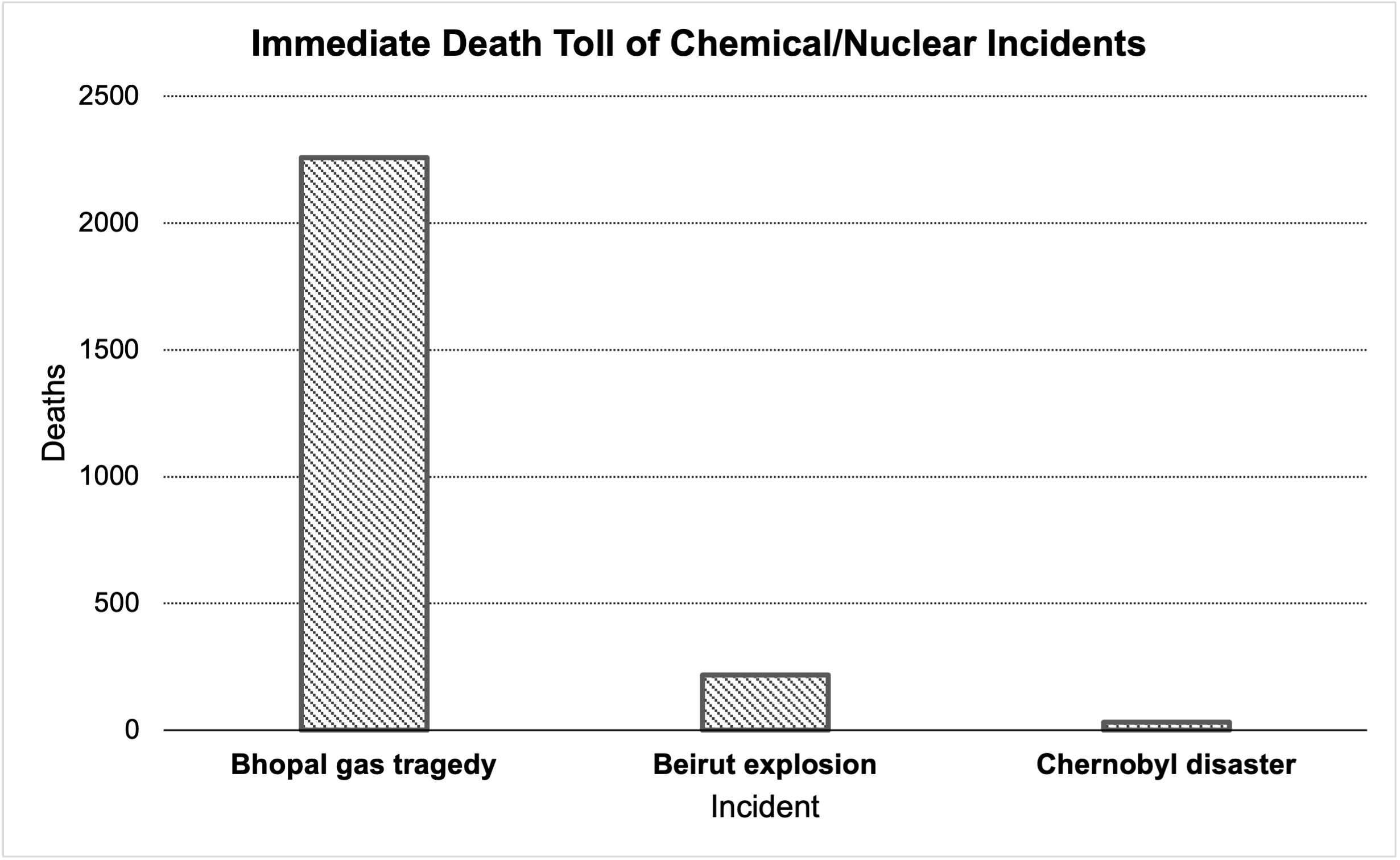On February 3rd, a derailed train in East Palestine, Ohio released 5 toxic chemicals into the area. The local authorities then burned some of the chemicals to avoid an explosion. Byproducts of this burning included dioxins, which are highly toxic compounds that persist in the environment. Local residents reported burning sensations in their throats and noses as a result of airborne chemicals. Residents are also worried how the water supply and air quality will be impacted in the long term.
While we cannot yet determine the long term effects on public health or the environment resulting from this chemical spill, this incident does remind chemists that our work can escape the controls of the laboratory or factory and cause devastation to the public. The scale and gravity of the impacts of a chemical incident are best demonstrated by the Bhopal gas tragedy of 1984, considered the world’s worst industrial disaster to date.

Exterior of the pesticide factory which caused the Bhopal gas tragedy. Image source: Bhopal Medical Appeal
On the night of December 2nd, 1984, 30-40 tonnes of the toxic gas methyl isocyanate (MIC) were released by a pesticide manufacturing facility over the city of Bhopal. In the immediate aftermath, over two thousand people died and over five-hundred thousand were injured. As Figure 1 shows, the immediate death toll of the Bhopal incident far exceeds that of the Beirut explosion of 2020 and the Chernobyl disaster, making it the deadliest chemical disaster ever. Those who survived in Bhopal showed higher rates of chronic illnesses, such as pulmonary fibrosis and bronchial asthma, and other health issues. To this day, the pollution resulting from the incident persists in the area and we observe high rates of congenital physical and intellectual defects in children born even decades after the disaster.

Figure 1. Shows the immediate death toll of the Bhopal gas tragedy, the Beirut explosion, and the Chernobyl disaster. Figure source: Ying Cai
The heartbreaking reality is that this incident could have been prevented. The manufacturing plant had many safety procedures and devices, but they were all malfunctioning, not used, or lacking supplies at the time of incident. For example, the refrigeration system to cool the MIC and the alarm for high temperatures in the MIC tank were removed months earlier and never replaced; the flare tower meant to burn the MIC as it escaped was also missing parts and therefore not functional. If the safety procedures were taken seriously by management of the plant, many lives would have been saved.
Disasters such as the Bhopal gas tragedy should be taught to chemists as a grim reminder of the potential consequences of our actions and the importance of chemical safety. We should take safety seriously even when running small scale or familiar reactions to build good habits. As well, these disasters should motivate the chemistry community to work towards green chemistry, where hopefully highly toxic reagents will not be needed in industrial quantities anymore.
~ Ying Cai

I remember hearing about the train derailment on the news last month. The scale at which these chemical disasters are occurring, particularly given this most recent one in the US, is frightening. I hope that there are changes in the way we deal with highly toxic chemicals and their methods of transport to prevent future occurrences like these.